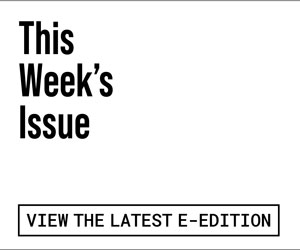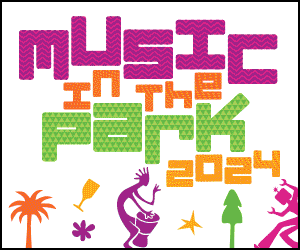Pamela Z is a polyglot. The realization she speaks simultaneously in multiple languages slaps aside previous definitions I and others have applied to the Bay Area-based composer, vocalist and multimedia artist. The new definition pops up during a glitch that cuts out the sung parts of the soundtrack while watching an online video of Ms. Z performing one of her works. Known to speak the language of music, she also sculpts languages of gesture, technology, printed text, found sounds, and the dynamics, phonemes, pauses and word fragments heard in multilingual voices of people in countries worldwide.
When the full score restores, there returns the language of bel canto opera, classical and world music, pop, jazz, folk, the Blues, soul, rap, what sounds like indigenous throat-singing and other sonic forms rendered unaltered or generated and manipulated using real-time electronic processing and wireless gesture controllers. In her larger works, visual language arrives not only with the music and her expressive body’s choreography, but through videos and installation elements that often interact with the looped and layered compositions that are in themselves responsive to her physicality.
Although she and I have spoken a half-dozen times before, I’m researching in preparation for a catch-up conversation. We’re expecting to talk about how her plans to use the prestigious, 11-month Rome Prize fellowship she was awarded in 2019 and began in 2020 were ripped asunder by the pandemic. She had told me just prior to everything shutting down that she was geared up to compose solo works during her time at The American Academy in Rome. The fellowship was put on hiatus and her dreamed-of solo repertoire was swallowed up by a return to her home studio in San Francisco and the maniacal pace of commissions to write music for ensembles, chamber groups, orchestras and solo artists that kept her finances afloat and her creative juices pumping during Covid.
Lost among the opportunities the fellowship underwrote was a new performance piece that would have had its debut in June 2021 at the Museum of Modern Art in New York. Anticipation in the contemporary electronic music arena was high for an artist whose work in recent years has expanded to include dance scores and theatrical pieces and collaborations or commissions from Bang on a Can All-Stars, the Orchestra of St. Luke’s, the Kronos Quartet, Eighth Blackbird and more. Her interdisciplinary performance works have been presented at Yerba Buena Center for the Arts and Los Angeles’ REDCAT, and installations included at the Whitney, the Diözesanmuseum (in Cologne) and the Krannert in Illinois. In addition to the Rome Prize, she has been awarded a Robert Rauschenberg Foundation residency, the Guggenheim, the Doris Duke Artist Impact Award and Herb Alpert Award. She holds a music degree from the University of Colorado, Boulder.
“I already had sort of too many commissions when I went to Rome, but I somehow painted myself into a corner saying yes to a ridiculous amount of work—but none of it was solo work,” she tells me as we begin a 75-minute conversation. But then, her apologetic tone shifts up an octave as she says, “I did make one new solo thing quickly while doing a residency at Seattle’s On the Boards.”
Following a standard sound check in the space, she remained in the theater instead of going outdoors to grab a quick bite to eat before the evening performance. “It was quasi-improvised. I used video footage I had made in New York that I shot out of the window of a cab that was taking me somewhere along the West Side Highway. There was an adjacent street with trees; it was just the gorgeous movement of bare (branched) trees. You see the waterfront, a ship and warehouses behind the trees. In the work, I’m controlling the video with my voice. The amplitude affects the speed of the video, or it takes two layers and makes one emerge more than the other.”
You could call the new work a “happy accident,” a phenomenon not uncommon to Ms. Z and most artists with a similar mindset aimed at expansion, evolution and risk-taking. Theirs is an attitude that does not deny the value and essentialness of classical training and decades of grinding away at craft and technique, but uses those elements as foundations for exploration, simplification, amplification—and leads to occasional fortunate “missteps” and inspired music that results.
“Happy accidents are responsible for a large percentage of discoveries I’ve made,” she says. Recently, working on Zoom caused her to play with the camera, using close-ups, layered selfies, distorted or exaggerated perspectives. “Online, you’re up in someone’s face, where you wouldn’t be in a concert hall. A couple things I did in those online concerts, they only work when I’m playing to the camera. Like using the camera on my iPad so I could get a second image of my face so (what is seen on screen is) me in a room and a giant eye and my mouth singing or saying the words. That wouldn’t work on a concert stage. Audiences would just see a person holding an iPad, and it wouldn’t have the impact of your screen completely filled with a face and a giant eye.”
She also used gesture controllers attached to her hand and placed the camera to show an enormous hand manipulating sound. It is effective if choreographed for the camera. On a stage with a proscenium, there’s far less drama watching a person up to 200 feet away waving her hand in front of a tiny box the size of a deck of cards to create sound.
During the copious amount of time she spent in isolation, sitting at her work station and generating scores for other people to play, she honed her music skills. At age 66 and after decades of working in electronic music, she says the focus became not just composition but zeroed in on the mechanics of instrumentation, how a certain phrase would sit in an instrument and reading scored music by other composers. “It was like going to music school again. Covid and not being able to tour immersed me in an intensive theory and composition course.”
The moment live performances resumed after 18-months of lockdown, she hit the road. “Since February, this is the first time I’ll be home, and it’s just for 10 days. It went nuts when all these things scheduled that had been delayed; they wanted them all at once.”
Among the “things” upcoming are a performance for Issue Project Room in New York in September, the premiere of Presence, a new work with pianist Sarah Cahill and violinist Kate Stenberg that will take place in San Francisco in late September, and a number of yet-to-be-announced installations and appearances at festivals or with major orchestra companies.
“I’ve not really started on it, but I’m about to,” she says, about the collaboration with Cahill and Stenberg. “I’m excited because for one thing, I’ll be performing and it involves my voice and electronics plus their piano and violin. There’s a video element, somewhat theatrical, using (material) from videos I’ll shoot of Kate, Sarah, myself and our instruments. It’s about being present. I’m coming up with physical things involving expression and gestures for them that will be baked into the piece.”
During talkbacks and lecture demonstrations, a common question asked by the audience is about humor. “They say, ‘Talk about the fact you inject humor in your work.’ I don’t inject humor, I just allow it. My work is inspired by the world around me, things I hear, found sounds, language I see printed, things found in life. And life is ridiculous—so it would follow that if my work makes a portrait of what’s around me, if I make work that’s honest, well, life is weirder and funnier than any world I might invent.”
What she finds funny, or at least fun, is that audiences approach contemporary music in predictable ways but can respond unpredictably. “Every place, people think contemporary music is serious. They’re terrified that laughing is the wrong reaction. I’ve played where they seem they don’t like it because they’re so unresponsive.”
In Seattle, Ms. Z says gut-busting laughter and outright “cracking up” came in response to the line, “what’s in your bag,” during a performance of Unknown Person. “Other audiences found it only chuckle worthy, or it brought a tear to their eye and an almost melancholy reaction. But laughing is infectious, and once the tone started, everyone caught on.”
Improvisation is another character in her compositions and performances. “It’s been pretty stable in that how it works now is the same as 15 years ago. Within that, it oscillates on a regular basis. When I’m composing for myself, it plays an enormous role in how I come up with the work. I start by setting up gear like I do in performance, and then I just play. Something clicks, then I have to remember it, re-order it, tweak it. Sometimes it’s created whole cloth, and then I have to learn what I did. Then, performed as a set piece, it stays within the same structure.”
Other works are quasi-structured, with improvisational elements such as eight bars of a melody played the same, followed by eight bars of improvised muttering and shushing that fit into the time structure. “The time I improvise the most is when I have the opportunity to play with other people. Another person in a gig asks me to sit in and we improvise. Sometimes I’m playing in situations where I’m just tired of my solo repertoire and I’ll add a whole section. I do that at Chapel of the Chimes in Oakland because it’s a long gig; I think it’s four hours. I usually use the names of the dead people I’m surrounded by (in the columbarium). I’m reading the names on the niches where the people’s ashes are held. Because we’re in their house and they should be honored.”
Reaching the end of our conversation, I ask her to trace the arc she and audiences have traveled in contemporary, electronic music and how the internet is shaping the next chapter. “Electronic music, when it started, was an unknown term. Only people involved in avant garde music; only those who knew John Cage. Then techno came in the ’80s and there was a pop music branch. Then for a broader group it meant experimental music that did not involve sweaty dance clubs. It was something you listened to in a white cube with people sitting behind tables and twiddling knobs and the audience sitting still and not laughing.”
Eventually, she remembers a breaking point when people at parties thought it meant she was a DJ or played beats. This graduated to awareness and acceptance of artists intermixing different kinds of electronic music. “Even so, I’ve sat in curatorial festival meetings with people who say it can’t just be something plugged in (like an electric guitar) and purists who think live flute with looping isn’t electronic.”
It’s a world in which a complete symphonic score with electronic elements may have a full, live orchestra playing and recording it and another, a composer using only a midi and digitally generated sound to create and perform as a soloist a work of equal scale. “It’s almost like the term electronic music is watering down and not having a meaning because it’s too broad,” she concludes.
Which is not to say that deep listening to electronic music is something the general 21st century audience has abandoned. “Access has broadened. More types of people are being allowed in the doors of…people use it, but I hate the term ‘music industry.’ I don’t know what it means. I’m not a cog in an industry, and it draws up images of the pop music industry. The world I function in is the crossroads of experimental music and music makers and the classical music world.”
She sees walls dissolving, with major classical music organizations embracing crossover in the kinds of people who are involved. “There’s greater diversity in people getting commissions and getting featured. I think it’s not an accident. It’s sometimes being done in a naïve way, but it’s still good the doors that were locked down hard against anything other than mainstream classical music are opening, and they’re clamoring for diverse voices. It’s culturally, racially or gender-wise, less of a monolith.”
And now, if she can resist the siren call from people clamoring for new works written for others, I’m hoping Ms. Z will get busy creating some serious, solo, polyglotting compositions.














